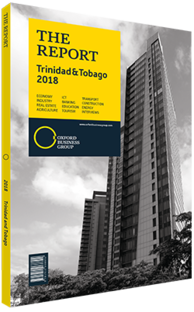Ronald Walcott, CEO, Telecommunication Services of Trinidad and Tobago (TSTT): Interview

Interview: Ronald Walcott
How can mobile and landline internet penetration rates be increased in Trinidad and Tobago?
RONALD WALCOTT: T&T’s mobile telephone penetration rates are among the region’s highest. However, this is not the case with mobile phone and fixed-line internet penetration figures, which are approximately 50% and 20%, respectively. In this light, the primary and overarching mandate of TSTT in the near future is to transform itself into an agile, broadband communications corporation. The first steps were taken when TSTT launched mobile 4G LTE coverage nationwide. The expected release and granting of the 700-MHz spectrum by the Telecommunications Authority of T&T will mark our next steps.
We expect 4G LTE technology to arrive by the end of 2018 or beginning of 2019 to rural and suburban areas where such coverage is unavailable or not offered at optimal conditions. Our plan also includes bringing fibre connectivity to a larger share of the country, increasing on the 100,000 homes that already enjoy service. This will not only generate additional revenue and increased company turnover, but will also entail a social and cultural shift that we will have to provide for.
Is there a need for a national broadband backbone?
WALCOTT: There is definitely a need for a unified conversation and strategy for the nation’s broadband backbone that includes both the regulator and the operators in order to harmonise the use of the broadband backbone. While some work has started in this regard, it is still too disjointed for it to be applicable. The discussion should be focused on regulation rather than the process of infrastructure expansion: in the recent past, over 7500 km of fibre was laid in T&T, signalling that the underlying issue is not the installed capacity, but how to increase network efficiency. Currently, T&T’s broadband network is reliant on the Chaguaramas entry point. As we further develop network capacity, the fact that there is one entry point is a concern, and focus should diverted towards increasing geographic redundancy. In addition, private sector initiatives continue to lack the necessary technological skills to lay down their own fibre networks. A possible solution could be the creation of a company that has the dual purpose of providing the necessary support for a broadband backbone in addition to helping the state implement an e-government system approach.
In what ways could ICT contribute to the country’s goal of diversifying the economy?
WALCOTT: All major downstream systems – whether robotics, cryptocurrencies, artificial intelligence or autonomous cars – will rely on a robust broadband platform. The need for an advanced and well-developed broadband backbone seems indispensable for such industries to successfully develop. However, it is important to state that diversification from energy or other traditional sectors will not happen overnight. Increasing the level of complexity in the economy is not simple; it requires both the resources and time to mature so as to provide the expected results.
In your opinion, would the national market benefit from the entry of another telecoms provider?
WALCOTT: A third operator is not yet needed. On the contrary, the introduction of an additional operator in a well-served market is likely to cause a race to the bottom in prices, which would not benefit customers. In the context of T&T, such competition over prices would impact the level of infrastructure and investment in the sector. Further consolidation in the market could be achieved by reinforcing the Telecommunications Authority of T&T as the institutional warrantor of universal coverage and a correct use of the provided spectrum by operators. Universal service is a shared obligation of operators and regulators, especially in the case of the former, which serves to promote infrastructure developments in low-density population areas.
You have reached the limit of premium articles you can view for free.
Choose from the options below to purchase print or digital editions of our Reports. You can also purchase a website subscription giving you unlimited access to all of our Reports online for 12 months.
If you have already purchased this Report or have a website subscription, please login to continue.

